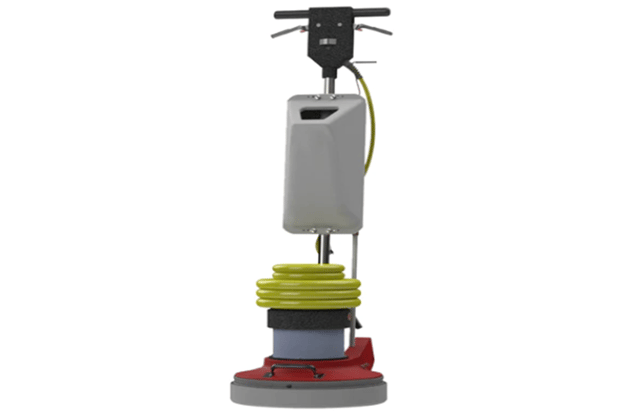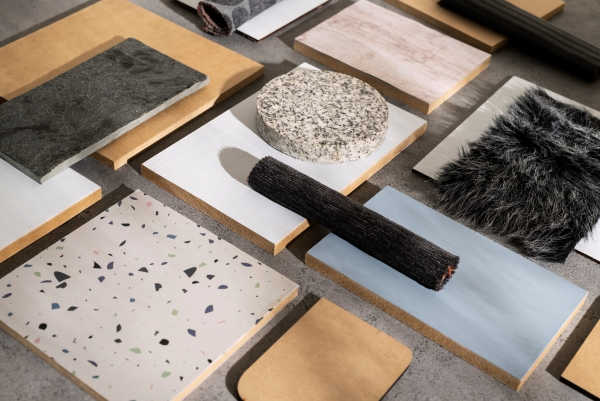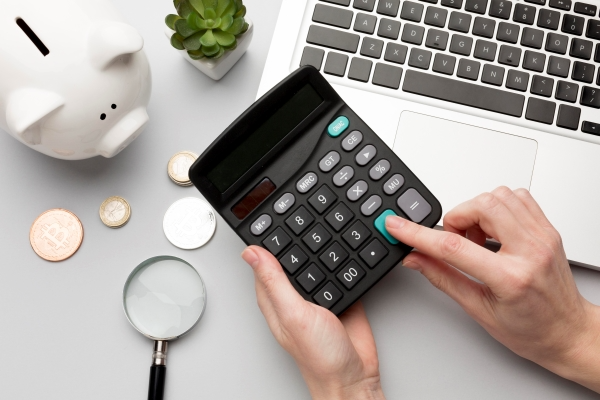Updated May 17, 2023
The flooring market is enormous, reaching $342.88 billion in 2020 with a projected compound annual growth rate of 5.4%. We understand the importance of having the right tools, even if it means spending a little extra to get them. You’re in for some helpful tips to maximize your next commercial-grade floor buffer.
Sometimes, it is not about going for the most expensive floor buffers but getting something that does the job efficiently. You must consider the right type of equipment and the floor types you hope to work on. The floor buffing machine you’ll use for vinyl floors will differ from the one used for hardwood floors, at least in terms of components.
This guide will help you pick the best floor buffer that won’t break the bank. We’ve outlined simple considerations for purchasing the floor buffing machine. With that in mind, here is our guide for buying floor buffing machines.

Do You Need a Commercial Grade Floor Buffer?
Consider the clean feeling you have after using an electric mob, whether on hardwood or concrete. Floor buffers do much more, as they suck up dirt while cleaning. Hence, they take you a step further in getting shiny floors that are better than you’d get with an electric mob.
Do not mistake a scrubber for a floor buffer. Both may have vacuums and use a cleaning solution, but floor buffers have rotating heads. They polish and scrub, but they clean less than a floor scrubber.
Before you head into the market to search for a new commercial-grade floor buffer, let’s address why you need it. Why would you prefer to get a floor scrubber or another machine? Maybe you want to add it to your list of flooring machines.
Here are the reasons why this equipment is necessary for your business:
- They are ideal for different floor types, including concrete, tile, hardwood floors, marble, vinyl, etc.
- Floor buffers can address surface or sealant layer (grout) damages.
- They are ideal for removing dirt, stains, scuff marks, etc.
As floor buffers can polish after leveling a surface, you’ll eliminate slip-and-fall accidents on uneven surfaces. That’s one benefit, among many, of using this unique equipment. It is so much better than an ordinary floor cleaner.
The Buyer’s Guide to Getting a Commercial Grade Floor Buffer
You don’t have to be technical to get a suitable floor buffing machine. However, there is one thing you should know when sourcing equipment like this: the best floor buffer for home use will not be ideal for a commercial environment.
Hence, consider buffing and polishing capacity when getting commercial-grade floor buffers. We prepared this definitive guide to touch on different aspects of floor buffers. That is, to arm you with adequate knowledge to make a suitable choice.
We’ll start by expanding on the types of floor buffers before throwing in some purchasing tips. You’ll be better positioned to pick a suitable one from the market if you know the types.
Types of Commercial Grade Floor Buffers
There are three types of floor buffers based on their mode of operation:
- The manual walk-behind floor buffer
- The automatic walk=behind
- Ride-on floor buffer
The operator is in charge of moving and controlling the manual type. You apply the force for movement, cleaning, polishing, etc. In other words, you must ensure adequate contact during the buffing and polishing processes.
Switching to the automatic walk-behind time frees up some energy for you. This type is self-propelled, but you must control and direct it during buffing.
The ride-on type has a seat for the operator. You don’t have to walk behind it. However, it is also the most expensive floor buffer to purchase.
You’ll often find ride-on floor buffers on large industrial cleaning projects. They cost money. Conversely, manual walk-behind is simple and versatile.
At this point, the question you should ask is as follows:
Do you want a versatile floor buffer or one suited for large industrial cleaning? A versatile buffer is better for working in small-scale commercial areas like gyms or supermarkets with tile floors. You won’t have the space for ride-on floor buffers.
Tips When Buying One
The following tips will help you get the best floor buffer for your commercial business:

Floor Types
We already know that the floor types determine the cleaning solutions. For example, what you would use for marble, vinyl, tile, and concrete will differ from what you’ll use for a hardwood floor.
Consider the surface type you’ll work on most in your business. Then, select a floor buffer that is the most versatile to accommodate them.
Rotary or Dual Action
Depending on the design, a floor buffer can be rotary or dual-action. They produce different motions while scrubbing, cleaning, or polishing the floors. While they can accommodate vinyl, marble, or hardwood floor, they have unique benefits.
The rotary floor buffing machines spin the equipped pad, while the dual-action type uses an orbital motion. You can use the dual-action floor buffer for straight-line buffing, cleaning, and polishing. Also, it can quickly get into corners because of how it moves.
Choosing between these floor cleaning machines boils down to the cleaning path. The dual-action buffer might be best if you have many corners.
Consider the Power Source
You can use the following to power floor buffing machines:
- Electricity from the mains
- Battery
- Propane
Machines that work from the electric mains have cords that must be managed during operations. The battery-powered types offer more convenience when scrubbing, cleaning, or polishing. However, you will battle with the limited battery life.
A battery-powered floor cleaner might not be your best bet for extensive projects. Go for the propane types if you have extra money to spare. They offer convenience and extensive use to cover your scrubbing, cleaning, or polishing project.
Find the Optimal Operational Speed
Dual-speed buffers often operate at high speed. However, you must consider if the floor type needs that high speed.
Take delicate marble or tile floors as examples. Using a dual-speed type at high speed might cause a tear. Conversely, a rotary type will run optimally to deliver thorough cleaning and polishing while maintaining the floor’s integrity.
The equipped pad also plays a role in this aspect. Notwithstanding, speed and contact during the operation matter.
You can clean hardwood floors at high speed. For them, a dual-speed machine with a powerful motor will suit the job.
Going beyond the speed of dual-speed buffers takes you to floor burnishers, which operate at thousands of RPM. They leave a shiny polish on the surface.
Select a Buffer Size Based on Expected Contracts
The size of the floor cleaner determines the width of the pads you can use. Besides that, it also affects weight. You are better off with a small size if you will deal with smaller areas.
On the other hand, pick a large size if you will work in larger vicinities. The larger the pads, the more surface area you can cover in a shorter time.
Larger pads help save time. However, don’t consider them saving money, as they cost more than the smaller ones.
Select the Pad Based on Expected Floor Types
This consideration extends to the pad and its abrasiveness. You don’t want to use a rough pad on a surface more susceptible to aggressive wear.
A more abrasive pad has no problem on a dirty hardwood floor. Conversely, a softer pad will work fine on tile or carpet. That shows how important the tool is to get optimal results.

Consider Your Budget
You’ve done your homework and selected the best floor machine. Let’s assume you’ll work on hard floors. The final purchase comes down to the price.
Besides the machine, you’ll buy other components like brushes, scrubbers, pads, etc. You must factor in these considerations before.
Read User Reviews and Ratings
There is no better guide than getting reassurance about a tool from someone else. You can ask people directly or research reviews online. One way to do online research is to see the reviews left behind on online shopping platforms.
Your research should cover as much ground as possible, from the floor polisher to the pad, scrubber, brush, etc. It should also cover how the machine fared on different floors, from tiles to hardwood.
Consider the Serviceability
Unless you are technically savvy to run your maintenance and repairs, it is best to consider serviceability. We know that pads, brushes, and scrubbers will be changed more often. However, other parts may need servicing regularly if you work in tougher environments like concrete and hardwood floors.
The motor and vacuum system will require periodic maintenance. Hence, it is best to use an easily serviceable floor polisher. That includes easy access to spare parts, including pads, brushes, scrubbers, hoses, etc.
You can never tell how the supply chain industry will be. Your floor polisher should have as little downtime as possible if you want to be profitable.
Buffer or Burnisher? Which is the Better Choice?
A rotary buffer is adequate for light cleaning, like working on a carpet or grout. The same applies to delicate marble or tile floors where you are okay with a tile floor scrubber.
However, burnishers come with higher speeds and more power. They can scratch tile floors, destroying the finish instead of leaving a fine polish.
Conclusion
Selecting your business's best floor buffer (commercial grade) is not a one-day feat. It requires several considerations and extensive research.
Besides the points mentioned, you should consider the weight, motor, gear ratio, etc. Go easy on yourself if it is your first time!
0 comments